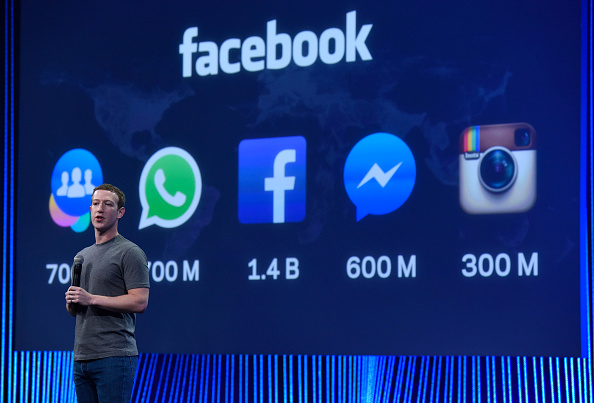
Social media is no longer just “social”—it’s fast turning commercial, too.
All the big players, from Facebook to Pinterest to YouTube, are racing to cover their sites and apps with Buy buttons and virtual shops. Their hope is that people will go from merely browsing their platforms to buying products on them, leading to more engagement and greater revenue. But there’s still little evidence users really want to mix payments with pleasure.
On Oct. 12, Facebook announced it’s testing ways to make it easier for users to shop on the social network’s app. A new “Shopping” tab will feature products from businesses with a Facebook page, for instance. It will eventually incorporate items for sale on other parts of the site, such as Groups. Facebook is also expanding its immersive ads which let companies insert fast-loading content into the app. And the company is continuing to test a “Buy” button on News Feed posts that lets people purchase items without leaving the platform.
Facebook’s initiatives could be particularly helpful for smaller businesses, which might struggle to finance the development of a mobile shopping app on their own. “We’re spending more time on mobile than ever before,” says Matt Idema, Facebook’s vice president of monetization product marketing. ”While people have made that shift, businesses are still in the process of making it.”
Meanwhile, Google is also working commerce into its websites, with a Buy button popping up on search ads over the summer and on YouTube videos in September. Twitter made its Buy button available to hundreds of thousands of merchants at nearly the same time. Pinterest now has more than 60 million shoppable posts that come with Buy buttons.
The buttons are appealing to tech companies for a variety of reasons. Fulfilling orders directly could give them a slice of what eMarketer expects to be the $1.6 trillion consumers will spend online this year. Buy buttons also make it easier for tech companies to prove that advertisements on their platforms are driving direct sales, boosting those ads’ value.
On the retailer side, social media Buy buttons could solve a huge problem: Mobile Internet use is way up, but it’s a pain to input credit card and shipping info on smartphones. “[Retailers] are getting a lot of cart abandonment on mobile devices,” says Cathy Boyle, a senior analyst at eMarketer. “It’s still a frustrating process to go all the way through to complete the sale on a mobile device, especially a smartphone. For retailers, this is a pain point for them. This capability of being able to shop and buy is really critical for them.”
Even if retailers are on board with buy buttons, though, there’s no guarantee that consumers will follow suit. When asked by University of Massachusetts Dartmouth researchers, only 35% of millennials said they were likely to use a Buy button on Facebook — low turnout for a typically tech-forward group. Just 24% of millennial respondents, meanwhile, said they’d use a Buy button on Twitter. (The two companies have each said about half their users come to their sites to look for products and make purchasing decisions).
“We really know very little about these buy buttons,” says Nora Barnes, director of UMass Dartmouth’s Center for Marketing Research, which conducted the study. “As a consumer behavior specialist, I’m looking at this and saying, ‘Who wants or needs this? Who’s going to use it?’ I think Millennials are saying the same thing.”
Barnes points out that many consumers have already been trained to go to a single outlet for all their shopping needs: Amazon. The online retail giant has experimented with social media commerce itself, allowing users to add items to their shopping carts via Twitter by tweeting #AmazonCart in response to messages listing Amazon products. However, Amazon has since cancelled the program. It now seems content to drive users to its website, apps and real-world shopping assistants like Echo and its press-to-order buttons.
Tech companies are resistant to share hard data about Buy buttons’ efficacy, saying that we’re in the early days of their implementation. YouTube is partnering with creators on a series of videos made to show off hot holiday products and its new Buy button at the same time; the company says it will monitor how the button impacts view time and other important metrics. On Pinterest, some merchants have already seen the buy button help them lure in new customers.
“It’ll just take a little bit of time for people to get accustomed to this new method of buying,” says Pinterest Head of Commerce Michael Yamartino.
More Must-Reads from TIME
- Why Trump’s Message Worked on Latino Men
- What Trump’s Win Could Mean for Housing
- The 100 Must-Read Books of 2024
- Sleep Doctors Share the 1 Tip That’s Changed Their Lives
- Column: Let’s Bring Back Romance
- What It’s Like to Have Long COVID As a Kid
- FX’s Say Nothing Is the Must-Watch Political Thriller of 2024
- Merle Bombardieri Is Helping People Make the Baby Decision
Contact us at letters@time.com